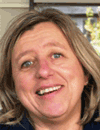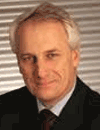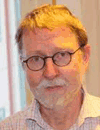Other Track AgendasBiobanking: Preparation, Storage & Analysis | Drug Discovery Automation - Chemistry Automation & Compound Management | Drug Discovery Automation - HCS & Cell Based Assays | Informatics for Automation | Liquid Handling and Robotics | Nano & Microfluidics | Next-Gen Sequencing Automation | Separation and Detection |

Wednesday, 30 May 201208:00 | Registration | |
Session: Cord Blood Banking: Approaches for QA, QC and Storage | Session Sponsors |
| | 09:00 |  | Keynote Presentation Influence of the Preanalytical Phase on Blood RNA Features
Pamela Pinzani, Technical Coordinator, University of Florence, Italy
One of the main issues in biobanking is the establishment of standard operating procedure to control sample pre-analytical variation. Referring to RNA, the commonly used parameters are insufficient to reflect all changes occurring post-sampling. For an accurate evaluation of blood RNA quality, we report a broad panel of parameters including up and down regulated genes and markers related to RNA fragmentation and degradation. |
| |
Session: Banking of Various Biological Samples: European Union Regulatory Trends - Country Specific |
| | 09:30 | Running a Biobank – Detecting Current Legal Trends, Avoiding Typical Legal Pitfalls
Timo Faltus, Research Associate, Martin-Luther-University, Germany
The presentation covers legal questions from sampling, via scientific and commercial use of the samples and public advertising the services of a biobank. The presentation will therefore also explain how to avoid typical legal pitfalls biobanks face.
| |
Session: Banking of Various Biological Samples: Ethical and Privacy Considerations |
| | 10:00 | Human Research Biobanks in Europe: Ethical and Regulatory Aspects
Elena Salvaterra, Senior Researcher, Scientific Institute Eugenio Medea, Italy
This talk aims to present ethical, legal and regulatory aspects associated with human research biobanks in Europe. It focuses on key ethical aspects that distinguish adult from pediatric biobanks. | 10:30 | Coffee Break and Networking in Exhibition Hall | 11:15 | Blurring Boundaries between Research and Care in Biobanking: Exploring Tensions in Governance
Conor Douglas, Post-Doctoral Researcher, Vrije University of Amsterdam Medical Centre, Netherlands
Biobanks are confronted with multiple, diverging and changing norms related to research versus medicine. These entail different models of donor recruitment, and the conflation of research infrastructures as public versus private goods. We review the implications of these tensions for achieving 'interoperable' biobank governance. | 12:15 | Lunch and Networking in Exhibition Hall | 13:30 | Poster Viewing Session | 14:15 | Biobanking in a Private Research Institute: Practical Approaches and Challenges
Stella Somiari, Senior Director, Windber Research Institute, United States of America
Biobanking is an organized industry that provides biospecimens for research. Private Biobanks collect and bank a wide variety of specimens for internal and external use. The practical approaches we have instituted to address “demand” and “supply” challenges will be discussed. | |
Session: Banking of Various Biological Samples: What is the value of Biobanking and Biorepositories? |
| | 14:45 |  | Keynote Presentation How to Improve Interoperability of Biobanks: European and International Initiatives
Kurt Zatloukal, Professor, Medical University of Graz, Austria
The OECD Global Biological Resource Centres Network (GBRCN) should facilitate research requiring access to high quality biological samples and biomolecular resources. |
| 15:15 | Coffee Break and Networking in Exhibition Hall | 16:00 | Biobanking : Economics and Impact
Chana Rabiner, Director of International Affairs, National Cancer Institute, United States of America
While it is recognized that high quality biospecimens are critical in every aspect of today's medicine, the true cost and economic impact of biobanking has been poorly understood and better definition is needed. Current and future initiatives to address this will be discussed and evaluated. Topics will include: the total life cost of ownership, the costs associated with implementing best practices, how can the value of specimens and data be determined, and how can the economic benefits of biobanking be quantified. | 16:30 | Commercial Biobanking in an Academic Setting: Exploring the Scientific and Fiscal Boundaries of Biosample Resources
Andrew Brooks, Associate Professor/Chief Operating Officer/Director, Rutgers University Cell and DNA Repository, United States of America
Defining the value of biomaterials for research and clinical applications. How to develop a self-sustaining biorepository to support the local and global community. | 17:00 | Biobanking Applications for Genomics
Peter Lansberg, Managing Director, DNA Biobank Facility, The Durrer Center, Amsterdam, Netherlands
| 17:30 | Drinks Reception |
Thursday, 31 May 2012 |
Session: Banking of Various Biological Samples: What is the value of Biobanking and Biorepositories? cont'd | Session Sponsors |
| | 09:00 | Biobanking Rare Disease, the Eurobiobank-Telethon Experience
Corrado Angelini, Principle Investigator, University of Padova, Italy
To capture the value of rare disease material collection, the accomplishment of Eurobiobank and Telethon Network of genetic biobank will be presented as well as the catalogue used for rare diseases collection. | 09:30 | Targeted Resequencing Applications in a High-throughput Laboratory
Niels Kruize, Sales Director, LGC Genomics, Germany
| |
Session: Banking of Various Biological Samples: Sample Classes for Biobanking and Storage |
| | 10:00 |  | Keynote Presentation Molecular Tools to get the Most Out of Biobank Samples
Ulf Landegren, Principal Investigator, University of Uppsala, Sweden
Increasingly, large-scale analyses of biobank samples are undertaken at levels of DNA and RNA, but opportunities for extensive protein analyses have lagged behind. The proximity ligation technology allows high-performance analyses of plasma samples from patients and controls with readout via next generation sequencing. |
| 10:30 | Coffee Break and Networking in Exhibition Hall | 11:15 | Tumour Biobank for Advancing Translational Research in Oncology
Elke Smits, Scientific Project Manager/Medical Director, Antwerp University Hospital, Belgium
Prevention, treatment and care of cancer patients largely depend upon improvements in scientific research. By creating a virtual inter-institutional tumour biobank, translational research will be promoted and a network created for future academic, medical and/or industrial collaborations. | 11:45 | Use of ICT Tools to Monitor and Trace Life Cycle of a Biosample: The Experience of the BioBIM (Interinstitutional Multidisciplinary BioBank)
Fiorella Guadagni, Chief, Instituto di Ricovero e Cura a Carattere Scientifico San Raffaele Pisana, Italy
The use of ICT tools ie, RFID technology, allows to collect detailed data concerning several manual processes and to fully document the whole life cycle of samples stored in a biobank. | 12:15 |  Technology Spotlight: Technology Spotlight:
Miniaturization in Biobanking
Kate Enright, Marketing Manager, Thermo Fisher Scientific
As assay technologies advance, aliquot size required for analysis is decreasing. Typical
proteomic MS biomarker assays require sample volumes of less than 50µl while biobanks
typically store much larger volumes. Sample miniaturization presents opportunities to increase aliquot numbers (and allow for greater sample utilization without the need for additional freeze/thaw cycles) while presenting opportunities to maximize storage capacity and minimize the costs of long term cryostorage of biospecimens by reducing the overall size of biobank collections. This presentation will address comparisons between smaller and larger storage volumes, tube and sealing technologies, calculations for store sizes and total energy consumption and related topics.
| 12:30 | Lunch and Networking in Exhibition Hall | 13:30 | Poster Viewing Session | 14:15 | Following Nature’s Lead – Developing Next Generation Biostabilization Reagents
Rolf Muller, Founder, President and Chief Scientific Officer, Biomatrica, United States of America
This talk will provide details of work at Biomatrica in the invention and development of biostabilization technology which protects and preserves all forms of biologicals under ambient temperature, allowing not only for asset protection, but also significant impact on the future cost of patient sample collection, shipping and storage in personalized health care management. | 14:45 | Careful Selection of the Proper Tools to Increase Productivity of Biobanks
Tim Sheehy, Director, Promega Corporation, United States of America
To illustrate the selection of tools in building a bioprocessing workflow. These turn-key systems allow for increases in throughput, decreased costs per samples and an increase in the consistency and quality of the samples delivered to both the downstream customer and to the Biobank for storage.
| 15:15 | Coffee Break and Networking in Exhibition Hall | |
Session: Cord Blood Banking: Logistic Challenges in the Space as the Field Expands |
| | 15:45 |  | Keynote Presentation A Synergistic Approach to Regenerative Medicine through Cellular Therapy and Tissue Engineering
Mary-Beth Fisk, President & COO, South Texas Blood and Tissue Center, United States of America
The presenter will outline structure for biobanking of adult stem cells, cord blood stem cells and tissues. |
| 16:45 | Close of Conference |
|

 Add to Calendar ▼2012-05-30 00:00:002012-05-31 00:00:00Europe/LondonBiobanking: Preparation, Storage and AnalysisSELECTBIOenquiries@selectbiosciences.com
Add to Calendar ▼2012-05-30 00:00:002012-05-31 00:00:00Europe/LondonBiobanking: Preparation, Storage and AnalysisSELECTBIOenquiries@selectbiosciences.com